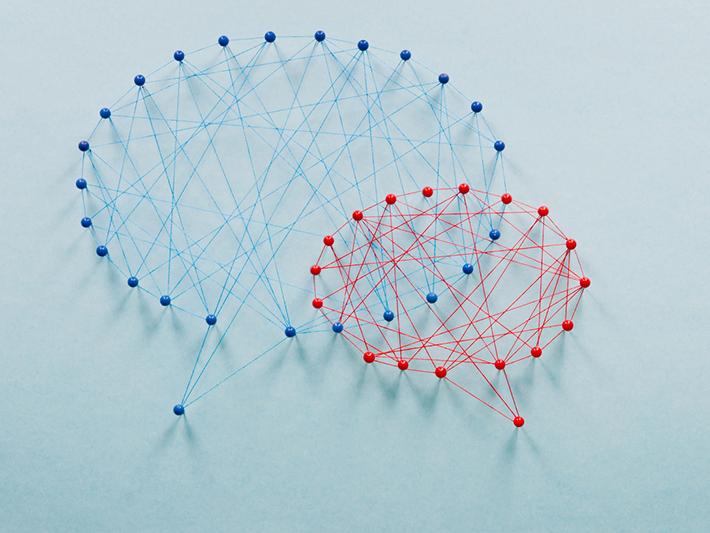
For EDI efforts to be sustainable, universities must evolve their language and practice

Equity, diversity and inclusion (EDI) is not static. It’s a living, evolving ecosystem, a social force shaping how we relate, how we recognise difference and how we build community. As this ecosystem matures, so too must the language that universities use to describe and enact it. Because, sometimes, the very words of inclusion can begin to feel exclusive.
We are at an inflection point. EDI remains under construction, even as the cultural ground beneath it continues to shift. We are transitioning, not smoothly or universally, from a world shaped by exclusion and marginalisation to one striving for visibility and belonging. The terrain is complex. Issues such as trans rights, the redefinition of womanhood (womynhood) and ongoing debates about race, gender and privilege are revealing the inadequacy of old frameworks and language. At times, these complexities can feel alienating to those trying to engage.
I’ve seen this up close. Years ago, a male colleague asked if men were allowed to attend an event crafted around leadership and women. His question caught me off guard. Some women at that time also queried men’s presence at the event, given the space had been hard won for women’s leadership and voice. But the questioning revealed something deeper: uncertainty about who belongs and what inclusion really means.
- The language of inclusivity is not inclusive
- Spotlight guide: The rainbow university
- To foster belonging, make a cultural shift
This isn’t new. In the early days of last century’s LGBTQ+ movements, we asked similar questions. Why would straight people attend gay events? Was their presence a gesture of solidarity or intrusion? At the time, our language was coded, closeted, discreet. But as the rainbow community emerged into visibility, we began to reshape and open the language of acceptance.
Today’s EDI work carries similar risks and opportunities. It must open space for those historically excluded without inadvertently closing it to others who seek to understand or support such efforts. If our terminology becomes too niche, ideological or inflexible, it risks segmenting rather than uniting. For many, the language of EDI can feel like a wall rather than a welcome. “Where do I fit in this?” they wonder. “Maybe I don’t.”
But inclusion is not a zero-sum game. The goal is not to replace one dominant story with another but to pluralise the story entirely. This requires a language that does more than name identities or call out injustices. It must invite dialogue, foster curiosity and allow space for growth and misunderstanding alike.
This isn’t about diluting the urgency of EDI. It’s about sustaining it. If the language becomes inaccessible or rigid, we risk alienating those who might otherwise be allies. To build a truly equitable society, we need language that is complex yet comprehensible. Precise and generous. Bold and welcoming.
We are living with moments of cultural and linguistic transformation. The language of EDI cannot be shaped only by policymakers, academics or activists. It must be practised, lived and co-created by everyone. We are evolving from somewhere to somewhere else, and the journey must feel open to all.
At the same time, we need to be honest about EDI’s historical trajectory, especially in institutions such as universities. For decades, EDI has mainly been a deconstructive project challenging dominant norms, exposing privilege and critiquing structural power. It has rightly focused on naming and addressing exclusion. But this has also led to increasing segmentation, often reducing people to identity categories and framing solutions in siloed ways.
Intersectionality has helped broaden the lens, but even it wrestles with the paradox at the heart of inclusion: naming who must be included often implies who is not. The logic of “fixing” institutions can unintentionally create new insiders and outsiders, reinforcing rather than dissolving boundaries.
As EDI became institutionalised, it also became commercialised. Organisations use a growing industry of EDI frameworks, audits, consultants and compliance tools. Each identity group is assigned its own checklist. Each issue is to be addressed with a pre-packaged intervention. These tools often function less as pathways to relationship and more as strategies for risk avoidance: not racist, not sexist, not homophobic, not ableist.
This transactional model can position institutions as compliant rather than transformed. It allows them to perform EDI instead of living it. It treats identity as something to be managed, rather than as a relationship to be nurtured. In trying to remedy past harm, it can create new polarities simplifying lived experience in favour of legibility and control.
But that version of EDI will not serve us in the future.
We must ask difficult questions about who benefits from current EDI models. Are we truly shifting systems of power? Or has one rigid institutional logic simply been replaced by another? Universities, and society more broadly, can do better. These spaces can be arenas for complex, uncomfortable and meaningful dialogue. They can show what it means to deconstruct exclusion while building new ways of belonging.
Universities could consider new ways of belonging by rethinking admissions to value diverse lived experiences, reinforcing language that respects all identities and creates space for open restorative dialogue, where all voices are heard and valued and included in a culture of shared growth, where equity and inclusion are not felt as benefits for a few but as progress for all.
EDI must go beyond naming what’s wrong. It must help us imagine and live new ways of being together. That means choosing language that connects rather than divides, that invites rather than intimidates. Inclusion is not a brand strategy or a checklist; it is a relational, ongoing practice rooted in care and curiosity.
For the movement to thrive, we must protect that relational core. We must hold space for those already at the table and those still finding their way in. We must resist simplification, commodification and, above all, we must keep asking: does our language build bridges or just new walls, shaped differently?
Bruce Watson is pro vice-chancellor for societal transformation and equity at UNSW Sydney.
If you’d like advice and insight from academics and university staff delivered direct to your inbox each week, sign up for the Campus newsletter.


